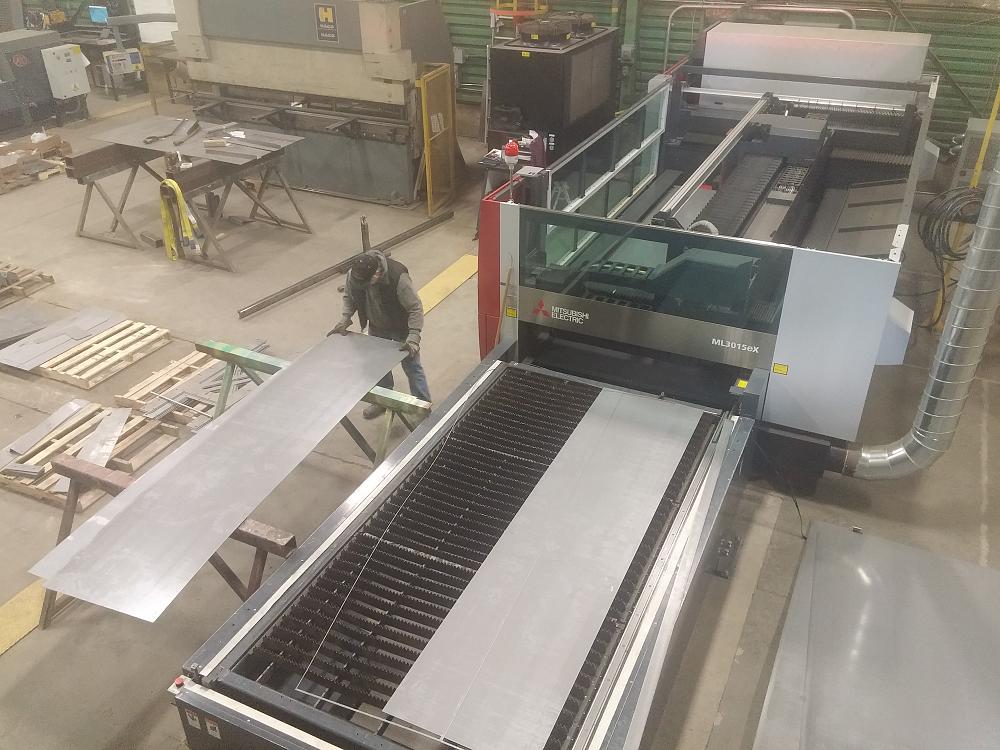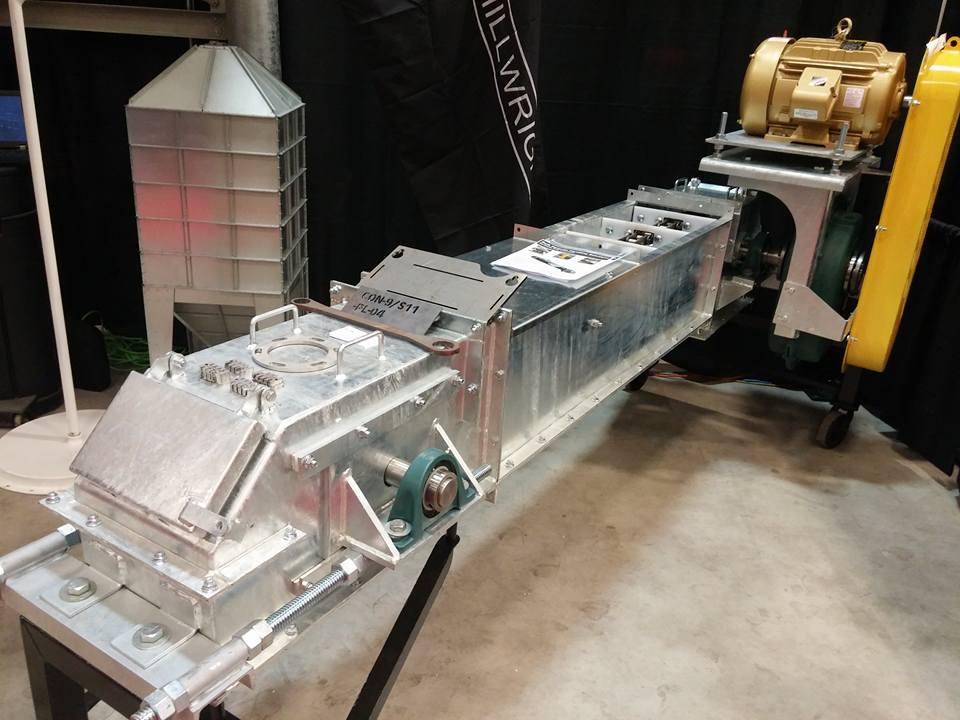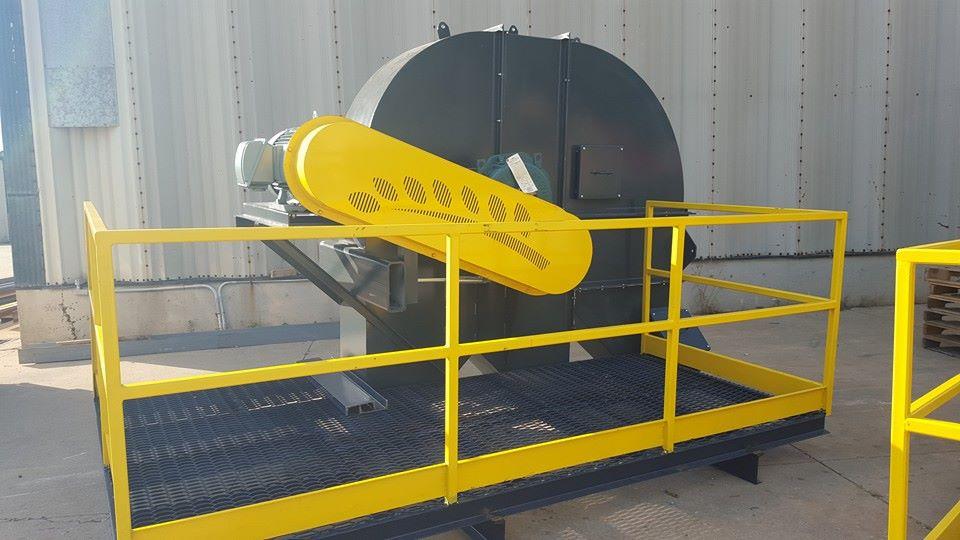Editor
- FMA
- The Fabricator
- FABTECH
- Canadian Metalworking
Business Profile: BDM Millwrights
New laser sparks new design methods
- By Rob Colman
- April 1, 2016
- Article
- Fabricating
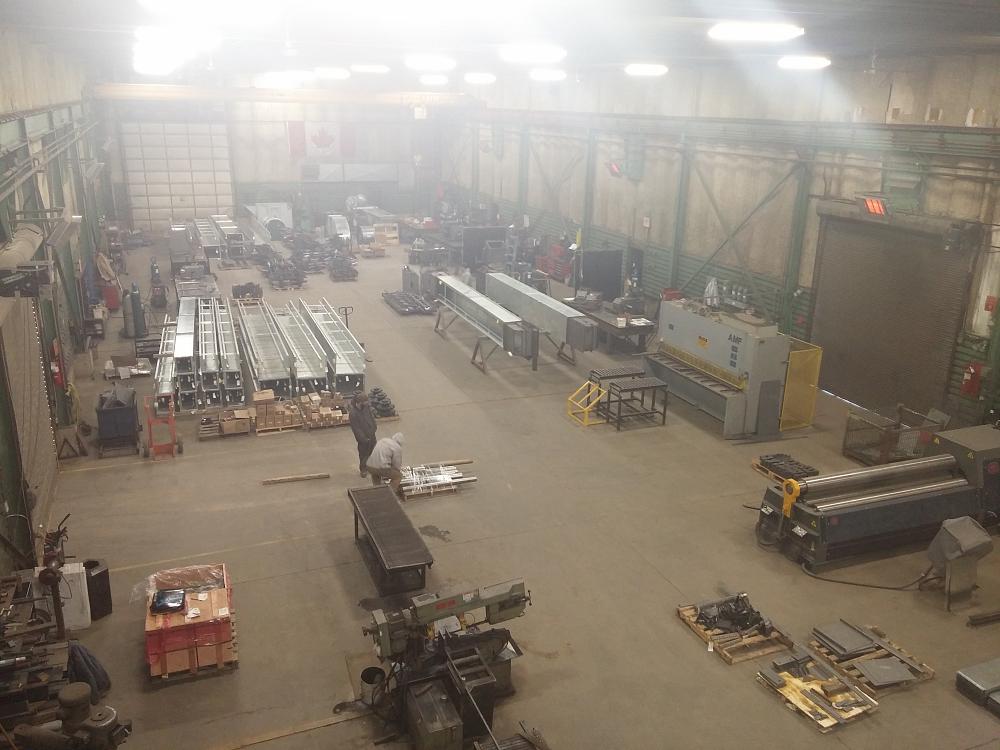
BDM’s recently-acquired 30,000-sq.-ft. facility makes it easier for the company to fabricate more of its assemblies.
BDM Millwrights of Chatham, Ont., has been providing millwright services to the agribusiness sector since 1991. With the recent addition of a laser cutter and an upgrade of its plate rolls, BDM is now able to offer a full complement of fabrication services to local businesses. The investment has also changed the way the company designs the products it builds and has added efficiencies throughout their operations.
BDM has four business units serving different areas of the agribusiness sector:
1. Commodities – Builds terminal elevators, grain elevators, ethanol plants, etc.
2. Animal feed – Builds equipment for manufacturing pet food, and serving the needs of feed mills in the U.S. and Canada
3. Food technology – Builds equipment for flour mills, rice processing plants, etc.
4. Service – Services BDM projects.
“Our growth has been driven mostly by our ability to supply a single-source solution, including engineering and design services, fabrication, and installation,” said company CEO Jim Waters. With the growth in agribusiness, BDM has seen its market value grow.
Latin America has also been a critical part of that growth.
“Around 10 per cent of people in Latin America cross from poor into the middle class every year, and the first thing these people do is typically buy more protein, and processing protein is our business,” said Waters. BDM is currently working on a large project that is being shipped to Guatemala.
Now, with the Canadian dollar being as low as it is, BDM is gaining market share among local companies that previously may have sourced products in the U.S.
Designing for Laser Cutting
The investment in new technology has really made a difference for BDM as well. In December 2014, the company expanded its footprint from 11,000 sq. ft. to 30,000 sq. ft. With the added space, the BDM team knew that with the right equipment, they could move more of the work they did in-house, but it would require changing their design processes.
“Initially our business plan didn’t include manufacturing – we designed and installed and we subcontracted much of the fabricating,” said Waters. “But as time moved on we were fabricating more, and the space we were in wasn’t conducive to manufacturing the type and volume of jobs we build today.”
Before the laser purchase, BDM did all of its in-house cutting with a hand plasma torch or a shear, and any large-volume cutting was farmed out.
“Once we decided to buy our laser, we had to design for that capability,” said Waters. “Before we would build in angles, channels, and beams and use that with a combination of sheets to manufacture our equipment. Now we think in terms of laser cutting and bending sheet. Without changing our philosophy, we knew that the volume of material we were using would keep the 4.5-kW laser running only an hour or two a day.”
Now at every opportunity BDM will cut and fold sheet instead of using rolled sections, the way they used to.
A good example of the time savings they are seeing is the construction of a cushion box, which is a box at the end of each pipe in a grain distributor that is meant to help stop grain from cracking apart.
“Typically, before our purchase of the laser, a cushion box would take us 11 man-hours to build and assemble,” explained Waters. “Now it takes us three. I would say that’s consistent across many of our products. Jobs take as little as 25 per cent of the time to make. That may be on the extreme end, but we’ve certainly cut labour on most of our products by half.”
The design changes tend to mean fewer welds and fewer individual parts.
When asked about how this affects job opportunities at the company, Waters was blunt.
“Our intent is to put through more capacity with the guys we have,” he explained. “We have craftsmen here; they are very good fabricators. We are taking out all of the sort of grunt labour that takes them away from being craftsmen all day.”
The efficiencies and laser capacity also make it possible for BDM to build some of the equipment it had been buying from vendors – and for the most part, vendors in the U.S.
Remote Machine Monitoring
An added tool that BDM purchased with its Mitsubishi laser was the MC Remote 360 monitoring technology. This production monitoring and support system was created to provide transparency in the laser cutting process. It provides real-time data to help increase productivity, improve efficiency, and reduce downtime for the laser.
The machine monitoring module in the Remote 360 system provides the ability to monitor the laser from a PC, cellphone, or tablet. Various aspects of the machine, such as run, stop, and idle time, are tracked and trended to provide insight on where processes can be improved.
The system includes real-time access to an extensive amount of data, including machine state, machine status, production performance graphs, and a view of the program header. It also includes access to machine backup files via cloud, user alerts and notifications, and maintenance monitoring.
MC Machinery Systems’ (MMS) Remote Diagnostics & Fault Monitoring also provides real-time support and troubleshooting if issues arise with a machine. MMS is notified if the machine is having a problem, at which time it contacts the laser owner to fix it using feedback from the machine, or MMS schedules a service engineer on-site.
Right now BDM isn’t quite ready to take full advantage of this technology, but they do have plans.
“I would say we’re in the transition from walking to running with the laser,” said Waters. “We haven’t set up any hard KPIs on it. Once we fully understand what it can do, we’ll set up some KPIs.”
At the moment the biggest benefit BDM has received from the technology is the monitoring from MMS.
“I have received calls from them [MMS] saying that they’ve received notification of an error, so they are keeping on top of our needs,” said Matt Handy, laser coordinator at BDM. Despite having no experience with a laser before the purchase of this Mitsubishi model, Handy is now doing all of the programming, maintenance, and training, along with some quoting. The support from MMS has been a big benefit in that regard.
Local Support Services
Another way in which Waters sees the laser benefiting BDM is with laser cutting orders from local clients.
Waters looked around the community in which they work when he considered the purchase of a laser and saw that BDM could fill a need among machine builders locally.
“We have about four local companies who are coming to us for laser-cut parts because there isn’t anyone else offering that service close by,” he noted. “I was aware of this possibility before we bought the machine and knew it could add to our bottom line.”
The challenge is that a lot of local orders for cut parts can be very small. However, because the laser cutting capability is a unique skill set in the area, it is a definite competitive advantage for the company. The challenge will be to streamline work flows enough to be as cost-effective as possible.
“For us, we don’t want to become a laser cutting business, but it does allow us to more efficiently build equipment for ourselves,” said Waters.
Right now BDM is mainly focused on taking advantage of the new technologies they have in place on the shop floor, but Waters can imagine at least one more laser on the shop floor in the not-too-distant future and the automation of the whole process.
Rob Colman can be reached at rcolman@canadianfabweld.com
BDM Millwrights, 519-676-9593, www.bdmmillwrights.com and www.bdmlasercuts.com
MC Machinery Systems, 630-616-5920, www.mcmachinery.com
About the Author

Rob Colman
1154 Warden Avenue
Toronto, M1R 0A1 Canada
905-235-0471
Robert Colman has worked as a writer and editor for more than 25 years, covering the needs of a variety of trades. He has been dedicated to the metalworking industry for the past 13 years, serving as editor for Metalworking Production & Purchasing (MP&P) and, since January 2016, the editor of Canadian Fabricating & Welding. He graduated with a B.A. degree from McGill University and a Master’s degree from UBC.
subscribe now


Keep up to date with the latest news, events, and technology for all things metal from our pair of monthly magazines written specifically for Canadian manufacturers!
Start Your Free Subscription- Trending Articles
Class is in session for college connections
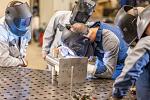
BlueForge Alliance partners with Nuts, Bolts & Thingamajigs to develop Submarine Manufacturing Camps

Portable system becomes hot tech in heat treatment

Orbital tube welding webinar to be held April 23

Cidan Machinery Metal Expo 2024 to be held in Georgia May 1-2

- Industry Events
MME Winnipeg
- April 30, 2024
- Winnipeg, ON Canada
CTMA Economic Uncertainty: Helping You Navigate Windsor Seminar
- April 30, 2024
- Windsor, ON Canada
CTMA Economic Uncertainty: Helping You Navigate Kitchener Seminar
- May 2, 2024
- Kitchener, ON Canada
Automate 2024
- May 6 - 9, 2024
- Chicago, IL
ANCA Open House
- May 7 - 8, 2024
- Wixom, MI













